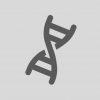We are currently hiring Postdocs on our ERC-funded EvoEpi project - offer here !
Financeurs
Recherche
Currently, the Molaro Lab uses mouse models, mammalian cell culture and comparative epigenomics to answer the following questions:
1) What are the functions of protein domains subject to diversification in chromatin modifying enzymes?
2) Which evolutionary forces drive short histone H2A variants diversification in mammals?
3) How do short H2As imprint parental epigenomes during mammalian reproduction?
4) How does epigenome evolution shape normal development and disease progression in humans?
Press and other highlights of our work
Researcher portrait INSERM (French)
Unususal Histones Mediate Parental Conflicts in Mammals (Fragile Nucleosome Seminar Series, 2021, Youtube)
Jeune Chercheur Funding Highlight – Fondation pour la Recherche Médicale.
Tête-à-Tête with Antoine Molaro (14th NYRA meeting)
The Secret Role Histones Played in Complex Cell Evolution (Wired, 2021, by Viviane Callier)
Fundamental proteins that guide embryo development are co-opted by cancer (Fred Hutch News, 2021, by Sabrina Richards)
Team Pictures
February 2024

October 2022

Summer 2022

Summer 2021

Membres
Publications
Recurrent Evolutionary Innovations in Rodent and Primate Schlafen Genes
Publié le 13 Jan 2024 dans bioRxiv
Joris Mordier , Marine Fraisse , Michel Cohen-Tannoudji , Antoine Molaro
Casting histone variants during mammalian reproduction.
Publié le 22 Juin 2023 dans Chromosoma
Histone renegades: Unusual H2A histone variants in plants and animals.
Publié le 15 Fév 2023 dans Seminars in cell & developmental biology , vol. 135 - pp 35-42
Osakabe A, Molaro A
Distinct evolutionary trajectories of SARS-CoV-2-interacting proteins in bats and primates identify important host determinants of COVID-19.
Publié le 30 Août 2022 dans Proceedings of the National Academy of Sciences of the United States of America , vol. 119 - pp e2206610119
Cariou M, Picard L, Guéguen L, Jacquet S, Cimarelli A, Fregoso OI, Molaro A , Navratil V, Etienne L
Novel Classes and Evolutionary Turnover of Histone H2B Variants in the Mammalian Germline.
Publié le 03 Fév 2022 dans Molecular biology and evolution , vol. 39
Raman P, Rominger MC, Young JM, Molaro A , Tsukiyama T, Malik HS
Short H2A histone variants are expressed in cancer.
Publié le 20 Jan 2021 dans Nature communications , vol. 12 - pp 490
Chew GL, Bleakley M, Bradley RK, Malik HS, Henikoff S, Molaro A , Sarthy J
Biparental contributions of the H2A.B histone variant control embryonic development in mice.
Publié le 04 Déc 2020 dans PLoS biology , vol. 18 - pp e3001001
Molaro A , Wood AJ, Janssens D, Kindelay SM, Eickbush MT, Wu S, Singh P, Muller CH, Henikoff S, Malik HS
Dynamic Evolution of De Novo DNA Methyltransferases in Rodent and Primate Genomes.
Publié le 01 Juil 2020 dans Molecular biology and evolution , vol. 37 - pp 1882-1892
Molaro A , Malik HS, Bourc'his D
Sex and suicide: The curious case of Toll-like receptors.
Publié le 04 Mar 2020 dans PLoS biology , vol. 18 - pp e3000663
Navarro-Costa PA, Molaro A , Misra CS, Meiklejohn CD, Ellis PJ
Evolutionary origins and diversification of testis-specific short histone H2A variants in mammals.
Publié le 04 Avr 2018 dans Genome research , vol. 28 - pp 460-473
Molaro A , Young JM, Malik HS
Evolutionary expansion of DNA hypomethylation in the mammalian germline genome.
Publié le 04 Fév 2018 dans Genome research , vol. 28 - pp 145-158
Qu J, Hodges E, Molaro A , Gagneux P, Dean MD, Hannon GJ, Smith AD
Studying the Evolution of Histone Variants Using Phylogeny.
Publié le 01 Jan 2018 dans Methods in molecular biology (Clifton, N.J.) , vol. 1832 - pp 273-291
Molaro A , Drinnenberg IA
Hide and seek: how chromatin-based pathways silence retroelements in the mammalian germline.
Publié le 04 Avr 2016 dans Current opinion in genetics & development , vol. 37 - pp 51-58
Molaro A , Malik HS
Two waves of de novo methylation during mouse germ cell development.
Publié le 15 Juil 2014 dans Genes & development , vol. 28 - pp 1544-9
Molaro A , Falciatori I, Hodges E, Aravin AA, Marran K, Rafii S, McCombie WR, Smith AD, Hannon GJ
Genomic landscape of human allele-specific DNA methylation.
Publié le 08 Mai 2012 dans Proceedings of the National Academy of Sciences of the United States of America , vol. 109 - pp 7332-7
Fang F, Hodges E, Molaro A , Dean M, Hannon GJ, Smith AD
Production of artificial piRNAs in flies and mice.
Publié le 04 Jan 2012 dans RNA (New York, N.Y.) , vol. 18 - pp 42-52
Muerdter F, Olovnikov I, Molaro A , Rozhkov NV, Czech B, Gordon A, Hannon GJ, Aravin AA
Directional DNA methylation changes and complex intermediate states accompany lineage specificity in the adult hematopoietic compartment.
Publié le 07 Oct 2011 dans Molecular cell , vol. 44 - pp 17-28
Hodges E, Molaro A , Dos Santos CO, Thekkat P, Song Q, Uren PJ, Park J, Butler J, Rafii S, McCombie WR, Smith AD, Hannon GJ
Sperm methylation profiles reveal features of epigenetic inheritance and evolution in primates.
Publié le 16 Sep 2011 dans Cell , vol. 146 - pp 1029-41
Molaro A , Hodges E, Fang F, Song Q, McCombie WR, Hannon GJ, Smith AD














